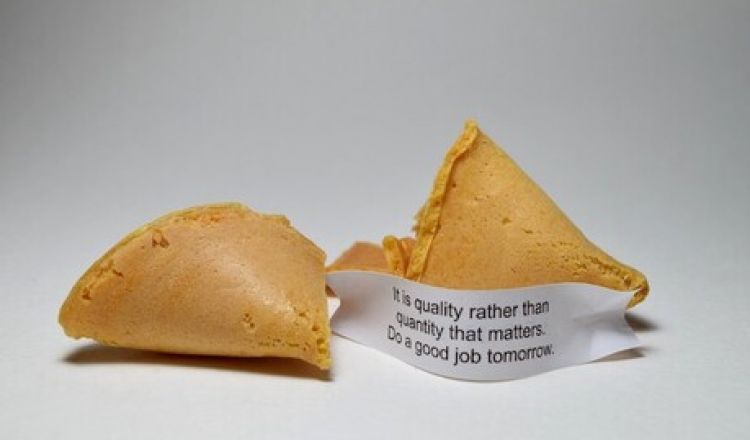What will be the lasting legacy of the pandemic on the digital media world?
2022-05-23 11:41

Credit: Image by Hannah Edgman from Pixabay
By: Jacob Granger-journalism.co.uk
Covid-19 introduced many fads and mainstays, as well as opportunities for growth and lessons for the future. FIPP CEO James Hewes discusses what will separate the winners from the losers
Cash-strapped and resource-scarce media companies need to think long and hard about where they invest their time and attention, especially in a time when there is always a new shiny product or trend lurking around the corner.
We had to think intentionally about this during the pandemic, when our way of working was turned upside down, business models were disrupted and jobs were on the line.
Out of this period of uncertainty however, has emerged good lessons. In a podcast with Journalism.co.uk, those lessons were explored with an expert on the digital media world, James Hewes, president and CEO of FIPP, a global media company which specialises in providing training, events and research for the digital publishing space.

James Hewes, CEO of FIPP
Fads and mainstays
We are all pretty sick of Zoom, but it no doubt proved its worth when the pandemic caused us to work from our bedrooms and living rooms. Working from home, however, has been a blessing and a curse, and many expect a hybrid model of two-to-three days in the office to become the norm.
Virtual events quickly became a stand-in for in-person events, but Hewes says that appetite (or bandwidth) for virtual events and virtual social gatherings is quickly waning. There might continue to be a place for smaller webinars and virtual talks exclusively for oversees speakers, but large scale events expect to return to the physical stage.
Elsewhere, social audio platforms and features rose to prominence during the pandemic. First of all through the live audio app Clubhouse, but once Twitter came out with its clone product Twitter Spaces it quickly disappeared, with the more established and versatile platform making it much easier for publishers to connect and engage with their audience. Facebook and LinkedIn versions of the app have not captured the same attention.
Hewes says that it is unclear whether these live audio features are here to stay. It may chart a similar path to podcasts which had their first boom 15 years ago, and experienced a second burst of popularity leading into, and during, the pandemic.
Billboards and stores
Publishers need to remember that such features exist to benefit the platforms, not the publishers, says Hewes. He says that the guiding principle of The Economist is a worthy lesson: only invest in a platform if there is a clear path to a key performance metric. In the case of The Economist, it only invests in a platform if there is a case it can feed into its digital subscription strategy.
Sometimes that means biding your time and being comfortable being second to a platform. It was only recently that the BBC News started on all-the-rage TikTok and the New York Times launched on the up-and-coming Telegram. Sit back and look at the user path to your main product, and evaluate what value there is to be earned.
Hewes says that some platforms are like billboards, good for brand awareness. Others are like stores, which help to facilitate purchases and revenue. Invest according to your strategy needs and potential.
"One of the features of modern media management is managing scarce resources. Our resources in the industry have never been scarcer than they are now - whether that is money, people or time - and there is no harm in saying I’m going to use those scarce resources on platforms I know will work," he says.
Five even fifths
Hewes adds that the great lesson of the pandemic is not to be too over-reliant on one form of revenue. Many publishers were found out when the digital advertising model crashed, meaning they had to find other revenue sources to rebound to.
Having an even set of revenue sources prevents future crises, and it would be ignorant to pretend such crises are not on the horizon says Hewes. He says any modern digital publisher needs five revenue streams contributing 20 per cent of overall revenue each; five even fifths.
For legacy publishers, the challenge is to find more revenue through digital means. For pure-play digital publishers, they need to build their way up from a position of having two or three.
Those five categories are legacy revenue (print sales or linear TV), digital subscriptions or paid-content revenue, e-commerce (merchandise sales via the internet or percentages of affiliate marketing), advertising, and one wildcard revenue - something innovative or with potential for growth, like education, consulting or live events.
"There are no sacred cows," says Hewes. "You have to be flexible and try new things whilst at the same time recognising your legacy, core business is the thing that is providing the profit which enables you to do that. Balancing the old and the new, the existing and the potential, is a really important feature of media management."
Legacy businesses need to take profits from legacy revenue (i.e. print sales) and invest it into new areas, he adds. It has been the classic problem in magazines that they have been "quick to launch products and slow to close them". But in the digital world, you have to be quick to both open and close.
"If you’re not, you can end up wedded to products or revenue streams that are not attractive. It comes down to agility, you’ve got to be agile," he adds.
To create more revenue streams for yourself, you have to embrace the wider wisdom in your ranks. Effective leadership today means coaching, not leading; empowering teams to take chances, to experiment and be comfortable with failure. In that environment, successful media companies discover opportunities naturally and internally.
The centre of the triangle: audio vs video
Newsrooms need to focus on the triangle of data, product and talent (content creators). What do they all have in common? Content: it creates data, it lives on your products, and it is what most of your teams make.
When it comes to expanding the content offering, the two obvious options newsrooms arrive at are video and audio. Which should they invest in?
Audio is cheaper and easier to produce than video, and gives many of your higher-profile journalists a new dimension and outlet to express their stories.
Podcasts can also be monetised, especially with Spotify and Apple Podcast's move into paid subscriptions. There are a range of other options, including bespoke podcast providers and the ability to carve out your own sponsorship deals. Unfortunately, the market is saturated and discoverability can be an issue. However, audio can be a great way to bundle value into your digital subscription package.
"Hits in audio are real hits," adds Hewes. "Whatever your objectives are, you can gain an audience and make a lot of money from a well-executed podcast."
Video on the other hand is harder to produce owing to its higher production costs and often being considered a specialist format. Platforms like YouTube and Facebook especially can be difficult to generate organic growth on because success on the platform often relies on publishers paying to boost exposure. And then publishers can be hit by de-monetisation strikes for the nature of their journalistic content.
Hewes says there is money to be made on the far-end of the YouTube numbers, but the best potential is if their production capability allows them to produce content good enough for the likes of Netflix and Amazon Prime. That can feel off-limits for anyone not in the leagues of the New York Times and BuzzFeed News: "for the average joe, video is still a hard proposition."
Is the cookie crumbling?
Much has also been said of the "cookiepocalypse" -- Google phasing out its third-party cookies, which have long been the backbone of digital advertising. The new model seeks to give more privacy to internet users and less information to advertisers.
Far from disrupting a core revenue stream, Hewes says this is an opportunity to cut out the middle-men of advertising agencies and deal directly with advertisers.
Publishers who have their own subscription or paid-for content model will be in a position to start collecting their own data. That puts them in a prime position to understand who their audiences are, what their interests are and the depth of their engagement.
"This is not some nebulous aggregation of people across the web," says Hewes. Audience data has inherent value to advertisers to sell directly to subscribers who a) have a relationship with the publisher and b) have consented to the use of the data. Publishers then act as the guardian of the interaction, which puts them in the driving seat.
The first step, he says, is to find the right software that allows you to collect data on your audience. Hire at least one person to collect data and nothing else.
After at least 18 months, you will be in a position to understand the profile of your audience and carve out commercial deals with advertisers. Identify the "whales", your most loyal audience members, and reward their loyalty with bespoke content just for them - but do not exploit their loyalty.
What will seperate the winners from the losers in the post-pandemic world, according to Hewes are the financial margins, flexibility with teams' working habits, and a commitment to learning and upskilling in order to retain talent.
Ultimately, though, it comes down to the leadership within the organisation.
"There are quite simply good leadership teams and bad leadership teams in this industry, and the good ones will win out," Hewes concludes.









